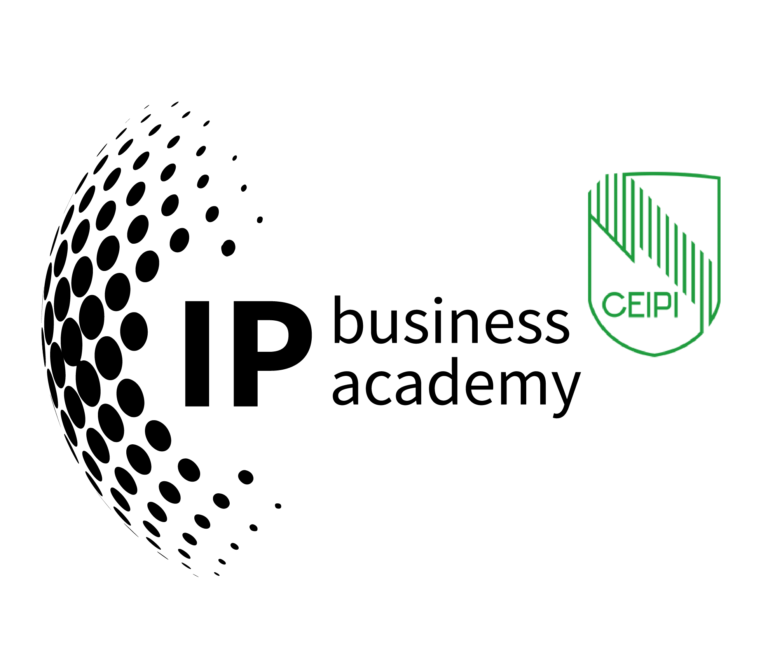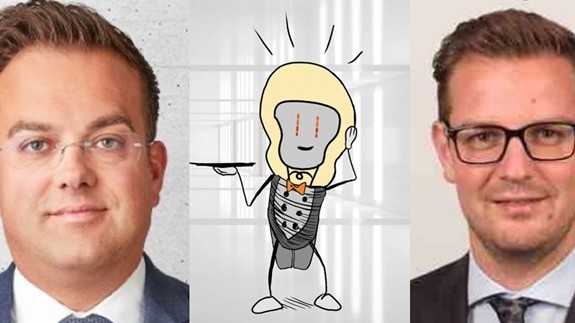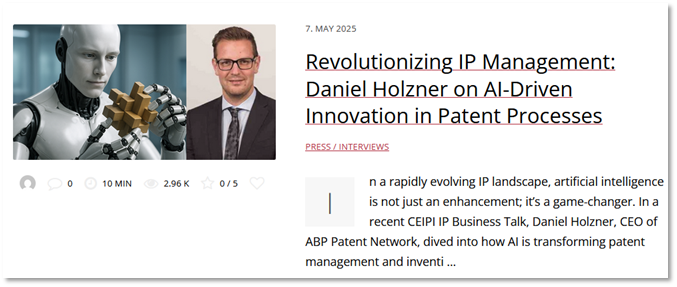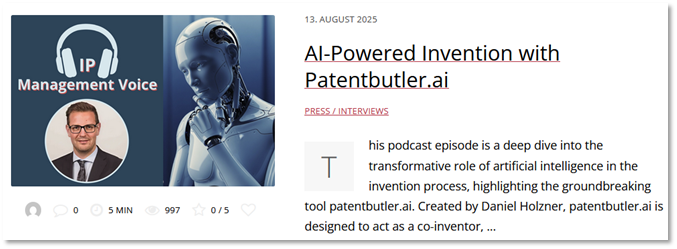From Proof of Value to Proof of Impact: How Hannes Burger and Daniel Holzner Turn patentbutler.ai into a Systematic Growth Engine on IPBA Connect
If you lead an IP department or an R&D team, you don’t just need another tool — you need a repeatable way to create demand for IP, prove its value inside your organization, and convert that value into measurable business outcomes. That’s exactly what Hannes Burger and Daniel Holzner are building on the IP Business Academy and IPBA Connect: a joined-up program of expert branding, content assets, events, and funnel mechanics that turn their product patentbutler.ai into a systematic business-development engine for innovative companies.
Below is how their approach works — and why it’s a compelling blueprint for IP analytics software vendors that want more than one-off demos.
________________________________________________________________________
 As a subject matter expert in AI-based patent searches and white-spot analyses, I demonstrated use cases for my tool through case studies and live demonstrations together with Hannes Burger, leveraging the channels of a powerful platform and network. This resulted in greater visibility for our brands uptoIP® and patentbutler.ai®, while also supporting the promotion of our products and services. Daniel Holzner CEO at ABP Patent Network GmbH
As a subject matter expert in AI-based patent searches and white-spot analyses, I demonstrated use cases for my tool through case studies and live demonstrations together with Hannes Burger, leveraging the channels of a powerful platform and network. This resulted in greater visibility for our brands uptoIP® and patentbutler.ai®, while also supporting the promotion of our products and services. Daniel Holzner CEO at ABP Patent Network GmbH
Personal Branding / Expert Branding: Make the experts the message
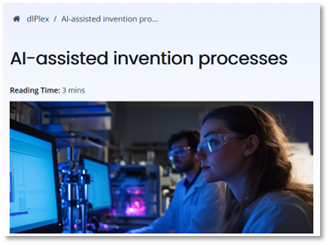 In complex B2B categories, products don’t sell themselves—experts do. Hannes and Daniel position themselves as IP Subject Matter Experts with clearly defined problem domains: AI-assisted invention, white-spot analyses, continuous prior-art evaluation, and streamlined drafting. Daniel’s public expert profile on the 🧭dIPlex establishes who he is for and what he does, while their teaching, interviews, and cases translate product features into expert methods that prospective buyers can trust.
In complex B2B categories, products don’t sell themselves—experts do. Hannes and Daniel position themselves as IP Subject Matter Experts with clearly defined problem domains: AI-assisted invention, white-spot analyses, continuous prior-art evaluation, and streamlined drafting. Daniel’s public expert profile on the 🧭dIPlex establishes who he is for and what he does, while their teaching, interviews, and cases translate product features into expert methods that prospective buyers can trust.
Crucially, they anchor their expert authority in full-length, named assets. When Hannes explores gaps in patent landscapes, he doesn’t do it abstractly—he references and builds upon “The Undiscovered Frontier: Navigating Patent White Spots for Business Success” 📑IP Management Letter. This lets audiences see a repeatable way of working rather than just hearing claims.
Digital Visibility / Positioning: Own the category narrative
On the digital IP lexicon 🧭dIPlex, Daniel curates a modular knowledge base under “AI-assisted invention processes”. The structure isn’t a brochure—it’s a playbook that mirrors how enterprise buyers learn and evaluate:
- Application of AI-based patent searching tools
- White spot analyses
- Continuous Prior Art evaluation
- Streamlined patent drafting processes
- AI-assisted ideation processes
Each page spells out the job to be done and how patentbutler.ai operationalizes it, so R&D and IP teams can map their pain points to specific capabilities. The result: category ownership on the 🔗IPBA Connect platform through useful, searchable, evergreen content rather than slogans.
Digital Marketing: Turn proof into pathways
Good expert pages attract attention; great ones create motion. Hannes and Daniel orchestrate content across IPBA Connect channels, so each artifact serves a role in pulling the right audience toward the next step:
- Interview-led authority. The feature “Revolutionizing IP Management: Daniel Holzner on AI-Driven Innovation in Patent Processes” distils what enterprise buyers care about—use cases, deployment patterns, and outcomes—so the “why now?” is explicit for technical and business stakeholders alike.
- Product-centric storytelling. The article “AI-Powered Invention with Patentbutler.ai” narrates how the software supports synthetic invention, white-spot discovery, and ongoing prior-art evaluation—concrete “aha” moments that help buyers visualize adoption in their environment.
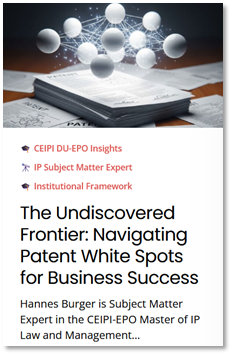 Curriculum-grade depth. Hannes’ analysis in “The Undiscovered Frontier: Navigating Patent White Spots for Business Success” behaves like a masterclass. It elevates the discussion from tooling to IP strategy—exactly where budget-holding stakeholders make decisions.
Curriculum-grade depth. Hannes’ analysis in “The Undiscovered Frontier: Navigating Patent White Spots for Business Success” behaves like a masterclass. It elevates the discussion from tooling to IP strategy—exactly where budget-holding stakeholders make decisions.
This is digital marketing that compounds: content assets answer evaluation-stage questions in public, so sales cycles start shorter and smarter.
LinkedIn: Social proof where the stakeholders already are
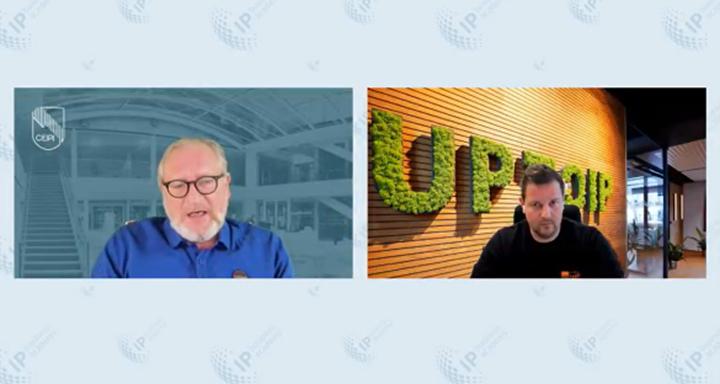 LinkedIn is where IP leaders, CTOs, and product heads compare notes. Daniel uses it not simply for announcements but for experience distribution: he shows the working, not just the result. The LinkedIn Live session “Daniel Holzner on AI-based patent management tools” functions as a real-time demo plus Q&A, creating “shared references” that internal champions can forward in stakeholder threads.
LinkedIn is where IP leaders, CTOs, and product heads compare notes. Daniel uses it not simply for announcements but for experience distribution: he shows the working, not just the result. The LinkedIn Live session “Daniel Holzner on AI-based patent management tools” functions as a real-time demo plus Q&A, creating “shared references” that internal champions can forward in stakeholder threads.
The same logic powers post formats that travel—short clips from talks, before/after claim generation examples, and annotated screenshots from white-spot maps—so value is felt in the feed, not hidden behind a booking link.
Systematic Business Development: From signals to structured conversations
Hannes and Daniel run business development like a product: instrumented and stage-gated.
- Awareness → Fit Signals
Teaching pieces and interviews attract IP and R&D leaders who self-identify (by topic, seniority, and problem statements) through comments, shares, and link-click patterns.  Fit Signals → Scoping Conversations
Fit Signals → Scoping Conversations
Visitors who engage with pages such as “White spot analyses” and “Continuous Prior Art evaluation” are invited to book short scoping calls framed around a specific analytical task (e.g., “Can we characterize white space for your next platform release?”). This aligns meetings with tangible outcomes, not generic demos.- Scoping → Proof Assets
Instead of jumping to proposals, they produce proof assets—lightweight analyses that mirror how patentbutler.ai would be used internally. This derisks adoption and gives champions artifacts to circulate. 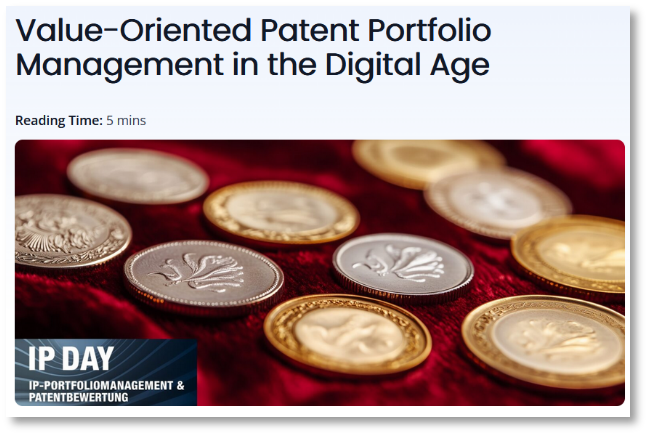 Proof Assets → Deployment
Proof Assets → Deployment
For teams already operating value-oriented portfolio methods, content like “Value-Oriented Patent Portfolio Management in the Digital Age” bridges the gap between analytics and governance—showing how the tool’s outputs connect to steering logic, budgeting, and road-mapping.
Client Journey & Conversion: Design every step for the enterprise reality
A good funnel is never generic. Their journey is tuned to how enterprise IP decisions actually get made:
- Problem articulation (public): Thought leadership clarifies “what good looks like” in AI-supported invention and portfolio management, using document titles explicitly so internal readers can cite them in emails and slide decks.
- Solution visualization (public → private): Case-style posts (e.g., “AI-Powered Invention with Patentbutler.ai”) show scenario fidelity—what features get defined, how similarity is assessed, and how iteration reveals genuine white space. Prospects see their own process in the narrative, making the next step obvious.
- Legitimacy transfer (events): Recorded talks and LinkedIn Lives provide third-party context and community validation. Stakeholders can revisit them asynchronously, increasing internal alignment without extra meetings.
- Operational fit (enablement): The 🧭dIPlex pages act as micro-manuals. Titles such as “Streamlined patent drafting processes” and “AI-assisted ideation processes” map directly to tasks R&D and IP teams already perform, easing change management.
Differentiation: Firm Brand, Product Brand, and Expert Brand—each with a job to do
Most vendors blur these layers. Hannes and Daniel keep them distinct and complementary:
- Firm Brand (e.g., law or consulting partnerships): Establishes trust in execution and governance—procurement, compliance, and integration comfort. It reassures buyers the engagement will be robust across legal, technical, and organizational interfaces.
- Product Brand (patentbutler.ai): Owns the capability narrative—feature discovery, workflow fit, and measurable outcomes (e.g., speed to white-spot characterization, reduction in prior-art review time, drafting quality indicators). The product brand positions around methods rather than raw technology, so the value proposition survives model churn.
- Expert Brand (Hannes Burger & Daniel Holzner): Owns the why and the how: method design, edge-case judgment, and program outcomes. It converts uncertainty into confidence and ensures the product is not a point solution but part of an IP strategy.
By assigning each brand a clear job, they avoid message collisions and help large organizations say “yes” for different reasons—legal risk comfort, operational fit, and strategic momentum.
Thought Leadership: “Share what you know so you can sell what you can do”
Their content consistently publishes how the work is actually done. The reader learns the mechanics of feature definition, similarity mapping, and iteration cycles—then sees how that translates into drafting precision and portfolio steering. That’s why the curriculum-level assets (e.g., The Undiscovered Frontier: Navigating Patent White Spots for Business Success) and the method pages (Application of AI-based patent searching tools, White spot analyses, Continuous Prior Art evaluation, Streamlined patent drafting processes, AI-assisted ideation processes) matter: they build understanding first, demand second.
Why this works for IP and R&D buyers
- It respects the evaluation journey. Public assets do the heavy lifting your team would otherwise do privately—educating stakeholders, aligning expectations, and answering the “will this work here?” question in advance.
- It connects invention to governance. Pieces like Value-Oriented Patent Portfolio Management in the Digital Age and the interview Revolutionizing IP Management: Daniel Holzner on AI-Driven Innovation in Patent Processes” show how analysis converts into filings, budgets, and business cases—where decisions are actually made.
- It shortens time to internal advocacy. A manager can paste a document title into an email (“See AI-Powered Invention with Patentbutler.ai—matches our ideation workshop next month”), and momentum builds without another meeting.
The takeaway
Hannes Burger and Daniel Holzner aren’t only marketing patent analytics—they’re productizing confidence in AI-assisted invention and portfolio decisions. By combining rigorous expert branding, findable method pages, interview-driven credibility, and event-based social proof, they make it easier for IP and R&D leaders to adopt patentbutler.ai with clarity and speed. That’s modern digital marketing for complex IP solutions: show the method, name the sources, design the journey—and let results speak in the language enterprises trust.
